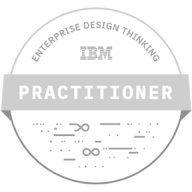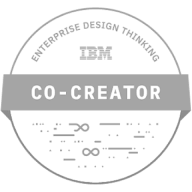
Video Streaming App Development: Features, Architecture & Costs
Want to know more? — Subscribe
Live streaming app development has become increasingly popular as more and more people seek convenient ways to share their experiences and connect with others in real-time. According to App Annie’s State of Mobile 2021 report, global mobile consumers streamed 146 billion hours on mobile devices in Q1 2019. By Q4 2020 they were streaming around 240 billion hours — a rise of nearly 65% in 2 years. The increase for 2020 alone was 40% to 935 billion hours. And according to recent forecasts, the size of the entire market is expected to reach $842.93 billion by 2027. Suffice to say – many are looking to get in on this.
Source: www.fortunebusinessinsights.com
So what is needed for VOD app development? How to create a live-streaming app?
In this article, you will learn more about video streaming mobile app development, video streaming application architecture and backend, monetization, and cost based on more than seven years of Softermii’s experience in developing different types of video streaming apps of various complexity and for multiple industries. Read on.
You May Also Like: Back-end developer and engineer salary ranges
TYPES OF VIDEO STREAMING APPS
In one of our previous posts, we've already discussed video chat app features and development. But here we would like to talk about how to build a live streaming app. To do this, you also need to know their types.
It's crucial to distinguish the different types of video chat apps. So before we talk about what goes into creating a streaming platform, let's start by looking at some of the different kinds of video streaming services available on the market.
Live Video Streaming Apps
Streaming services that cater to the gamer demographic are on the rise. Twitch is a prime example of this, with an average of 2.9 million concurrent users on the service at any given time, 27 million DAU, and is worth around $15 billion. To create a streaming service like Netflix or Twitch, you'll need to do more than contend with its technical features but the vast community of creators and viewers, as well.
Read more: How To Make An App Like TikTok: Features, Costs, and Development Process
On-Demand Video Streaming Apps
On-demand mobile video streaming apps are something that's in practically every household these days. Some of the most popular ones are Netflix, Hulu, Amazon Prime, Disney Plus, and Apple TV.
Some on-demand video streaming apps are also starting to provide live TV in addition to SVoD. Hulu is a prime example of this. You can watch more than fifty live TV channels, including local ones.
Video Streaming Apps from TV Providers or Networks
There are also video streaming apps from TV providers or individual networks. These would be HBO NOW, the Starz streaming service, or Showtime streaming. Rather than paying for premium channels as part of a cable package, as was once the case, users can now get access to programming for each premium channel individually.
Some users use and pay for multiple services at once. According to Statista, in the United States, 84 percent of Netflix subscribers also subscribed to Amazon Prime Video, and over 50 percent also subscribed to Hulu. Netflix was the most in-demand service, with the vast majority of users of other services also subscribing to the platform, although Amazon Prime Video was also a top choice.
Read also: Guide on Live Streaming Shopping App Development
That means that the users' overlap among services is growing. This trend increases the competition between SVoD market players for acquiring more consumers and their time spent in the app.
Benefits of Building the Video Streaming App for Your Business
There are some obvious benefits when it comes to developing a video streaming app. However, when you decide to build a video streaming platform, it's better to know them in advance.
Connect With the Right Audience
Video platforms are a great place for connection between streamers and users. It builds trust and provides an opportunity for interaction with creators and followers. Customers can ask questions and get first-hand information directly and quickly.
Increased Conversion Rate
Suppose you're providing the audience with valuable and timely content delivered through high-quality audio and video streaming. In that case, that means you can easily grow your audience which can be converted without a problem.
Availability in different formats
Another benefit of media streaming software development is that it is now not limited to only desktop or mobile. It can be easily adjustable to any device, which multiplies your audience and increases conversion rates.
Variety of Content
We live in the era of content. So, when building a video streaming application, you don't need to narrow your ideas and distribution to videos only. You can add as many features as possible to make your content delivery applicable to multiple audiences.
Industries that demand live-streaming solutions
At this point, you may be wondering what adding streaming and live streaming video services can do for your business. The reality is that live video streaming app development can be useful in a variety of niches. There are very few professions that can't benefit from streaming video apps in one way or another. Let's talk about a few examples before you know how to build a video streaming app.
Entertainment
The state of the market speaks for itself. Services in this sector are popular and lucrative, and even niche providers like Crunchyroll, MUBI, and Warner Archive, can make a profit. Live streaming app development is showing up more and more in this niche, as well. Read our guide on how to create an application like TikTok.
Medicine
Telehealth is all the rage and shows no signs of stopping. Not all telemedicine products involve live video streaming development, but a majority of them do.
Read also: Cost of Developing a Telemedicine App
Education
Remote education tools are going through a huge boom due to COVID-19 and are likely to continue developing in the future. This teaching model requires building a streaming platform (or even building a VOD platform) to add visual aids to the class.
Read Also: Digital Transformation For Education
eCommerce
With video streaming, buyers can see what the product really looks like instead of just getting a reference from a photo. The Chinese market is already seeing a boom in live streaming e-commerce, and Forbes is predicting that the US is next.
Read Also: How to Build a Platform like Hopin.
VIDEO STREAMING APP FEATURES
There are many features that you should consider when planning out live video streaming application development. Let's briefly go over some of the most crucial features of a live streaming app:
Onboarding
Onboarding is vital. New users need to learn about your streaming application before starting to use it. But keep in mind that the onboarding process should be easy, intuitive, and fast.
Registration
Registering through your video streaming application should also be as easy as possible for the user. If a new user can't do it within a few seconds, they may get frustrated and leave. Consider also adding a sign-up through social media profiles - it can make the process as seamless and fast as possible.
Video Library
A video library that's readily accessible for your users is essential and should be present on the first screen when the product is launched. If you want to build a streaming platform like Netflix, you'll need to contend with their features, and this is a major one.
Watch Lists
Once you begin to establish what one of your app users likes to watch, a recommended watch list feature will come in handy. They will appreciate your suggestions (but only if they're tailored correctly).
Ratings
This feature helps users to give reviews of broadcasters they like. Based on this feedback, you'll be able to tell how popular each broadcast is, and you'll know which guests to bring back.
Search and Discover
Searching for content should be quick and easy. Include a search box somewhere in the first screen since users may be going to your app to look up something specific. Discover features are equally as important for those just browsing to see if anything catches their eye.
Downloads
Downloading videos to local storage is very useful to travelers and commuters without a stable internet connection. Yes, building a mobile video streaming website involves more than streaming video.
Cloud-Based DVR
If your product has a live TV feature, a cloud-based DVR system should be in place so users can record shows through your app that are airing live. The Cisco Infinite Video Platform and the Velocix Origin are two popular options you could implement in your video streaming app.
Multi-Language Support
If you want to expand your streaming app worldwide, you should first add multi-language support. This feature will make your platform more user-friendly and attract users from different regions. So, be sure to embrace as many languages as possible when building a live streaming app like Netflix or HBO.
Subscription
Choose your subscription policy and allow users to manage packages and payments from the app. It’ll make your video streaming app more user-friendly and allow customers to select the one suitable for them.
Chat
Depending on the type of your video streaming platform, chat may be the right feature to add. It might help users communicate with streamers, create live Q&A, support communities, or make donations.
Offline Viewing
Alongside the downloading feature, the possibility to watch video content from online sites with offline access removes the need for an internet connection or makes viewing easier when the user's having connection issues. Instead of downloading video content over the internet, users should have an opportunity for offline viewing. It'll enable users to watch their favorite videos later without downloading them or using up extra space.
TECHNOLOGIES FOR VIDEO STREAMING APP DEVELOPMENT
A specific set of tech is used for video streaming service development. Let's talk about what the most popular solutions use for developing a video streaming website.
Video Streaming Application Architecture
One thing is true for any web or mobile product out there: for users to have a rewarding experience, any lag time must be reduced.
This presents a significant technical challenge specifically when talking about building a streaming platform. For the sake of proximity, original data must be copied across hundreds of servers around the world. Latency elimination is only half of the puzzle, though. A thriving ecosystem of technologies must be in place to facilitate data analytics and algorithms to customize such services.
Data streams need fault-tolerant processing, storage, and geographical distribution. Because of this, processing frameworks need to rely on queuing systems like Apache Kafka. This is a system that you should consider if you’re creating a streaming platform.
Processing frameworks like Samza, Storm, Flink, or Spark can be integrated with a streaming platform to feed the data-processing pipeline and process batch data. Netflix utilizes Kafka as an event-processing pipeline and a real-time monitoring tool. It uses the microservice architecture, which is based on micro-batch processing.
Creating the backend infrastructure is possibly the most complex part of building a VOD platform. HTTP Live Streaming (aka HLS) and Dynamic Adaptive Streaming over HTTP (aka MPEG-DASH) are the two most popular modern solutions. They both work by breaking down any media content into small pieces and sending them to the end-user over HTTP.
Read also: Reducing IT Infrastructure Costs
MPEG-DASH is an adaptive bitrate (ABR) protocol that detects changes in the internet connection and chooses the optimal video quality accordingly, reducing buffering. MPEG-DASH also allows the use of any video and audio codec (WebM, H.264, AAC, MP3, etc.).
HTTP Live Streaming (aka HLS) was created by Apple. It's also a popular ABR protocol that supports multiple alternate streams at different bitrates, user authentication, and media encryption. It supports H.264, H.265, AAC, and MP3 video and audio codecs.
Popular tech stack for video streaming app development
Netflix tech stack
Netflix uses Amazon's hosting service to distribute content with a custom CDN. They use MySQL, PostgreSQL, Cassandra, and Oracle databases. Their front end is built on Node.js and React, and Falcor, a proprietary JavaScript library that facilitates easy content distribution.
Hulu tech stack
Hulu has recently renovated its tech components and revealed details of the process on its tech blog. Their product now uses Node.js and React for their front end, with server-side rendering done by next.js.
Disney+ tech stack
Disney is not as forthcoming as Hulu and Netflix regarding their technology. Still, we can assume that similar solutions are in place for Disney Plus — Node.js, React, and Java on the front end with Amazon hosting.
Live video streaming software development is an entirely different process and will most likely involve WebRTC.
Read also: WebRTC App Development
Video streaming app development process
If your goal is to build a Netflix-like video streaming website, you should keep in mind that while the process for developing any product will be unique, it's going to have similarities to other products.
First comes the wireframe — the base that the application will be based upon. That's a very rough sketch of what the application can (not will) look like in the future. This crucial stage will ensure that every participant is on the same page come development time.
The next step of streaming application development is building a working prototype. That's not exactly the MVP, a version of the product that is ready to be deployed, but rather a basic version that can be used. This early version is used to assess the feasibility and gather crucial early feedback.
UI and UX design start concurrently with development after the initial prototype is built. This process involves multiple steps and stages of its own and results in an app's final, refined look and feel. While designers give direction to the video streaming app developers, they build beyond the core features and add all the bells and whistles.
Testing should start way before the final product is delivered to reduce the number of versions and, as a result, overall development costs — test for performance, security, usability, and compatibility throughout the development stage and after deployment.
HOW MUCH DOES IT COST TO DEVELOP A VIDEO STREAMING PLATFORM?
Now, you may be wondering about the typical video streaming app development cost. Unfortunately, there's no straightforward answer because there isn't a one-size-fits-all solution. Each aspect of the app must be individually tailored, making it challenging to provide an average cost.
However, for startups working within a limited budget, initiating the process with MVP development is a cost-effective strategy. The cost to make a streaming app for MVP development can range from $10,000 to $50,000. Although this may seem substantial, it's an investment that could attract further funding and revenue, allowing for comprehensive video-on-demand app development in the future.
1. Estimation, Research & UI/UX design
Time: 280 hours
Cost: $8 400
The journey to create a live streaming app begins with the discovery phase. This initial stage involves a detailed discussion about the product, its various stages, and the features it will incorporate. We take time to understand your specific requirements, desires, and expectations for your project. Following this, we compile a list of aspects to analyze, gather and process relevant data to identify patterns that align with your project's objectives. Every detail of your future streaming platform is confirmed with you.
Once the business analysis is complete, we progress to wireframing and prototyping. This stage is crucial for UX design, identifying the target audience, and crafting user journeys and flows. The outcome of this process will be high-fidelity wireframes and low-fidelity prototypes. After the client approves the prototype, we transition into the UI design phase.
Read Also: 8 Steps of UX Design Process
2. Development
Time: 640 hours
Cost: $25 600
The choice of technologies to implement your features will largely depend on the primary purpose of your project. Together, we'll determine the most suitable database, programming languages, and CRM to use in your streaming app development process. It's also crucial to identify the most efficient approach for bringing your app to life, keeping your timeline and budget in mind. It could involve utilizing video streaming APIs, SDKs, or even developing features from scratch.
3. Testing & Launch
Time: 240 hours
Cost: $6 480
The development phase unfolds concurrently with rigorous testing conducted by our QA engineers. We perform various tests to ensure all aspects of your application function as intended, promptly addressing and rectifying any issues. The time required by our IT specialists to complete your app will be determined by its complexity.
You should have a comprehensive understanding of building a video streaming service by this point. Once we agree with you on your audio-based social media platform's final version, our team will launch your project.
4. Creating technical documentation
Time: 40 hours
Cost: $1 600
Our IT specialists compile a comprehensive document detailing all the essential information related to your custom video streaming app.
Having explored the approximate costs and timeframes for each development stage, we'll now consolidate this information in the table below for easy reference.
| # | Stages | Time | Cost |
|---|---|---|---|
|
1 |
Estimation, Research & UI/UX design |
280 hours |
$8 400 |
|
2 |
Development |
640 hours |
$25 600 |
|
3 |
Testing |
240 hours |
$6 480 |
|
4 |
Creating technical documentation |
40 hours |
$1 600 |
|
Total |
1 200 hours (5 month) |
$42 080 |
|

|
|||
Various factors will influence your custom application's final video streaming app development cost. Considerations include the range and complexity of the features you want in the app, as more features typically require more development time. You should also consider the size and nature of the development team. Opting for an in-house or distributed dev team could affect your project timeline and budget. A distributed team could quickly fill skill gaps or help reduce your overall video streaming app development cost.
Read also how to build a voice chat app like Clubhouse and costs for telemedicine platform.
Video Streaming Application Development Challenges
Before starting the on-demand video streaming app development, you should know all the challenges that might be waiting for you along the way. Some of them may be quite obvious, but all of them are definitely tricky. Let's look at the main one because forewarned is forearmed.
Scalability
One of the main goals of any video streaming service is to grow the user base. However, the growing number of users may cause problems. The app must have scalable backend support to cater to the needs of the increasing number of viewers. There must also be facilities to stream content without any glitches for any number of customers at once.
Security
There might be several security issues regarding video streaming apps. One is the user information, especially if your service offers a subscription and payment feature gathering sensitive information. Another one lies in the field of copyrights, as any content requires valid rights to be acquired before streaming. Make sure you have reliable encryption algorithms to protect from misuse or breach of the users' data.
Streaming Quality
Several factors can hinder the performance of video or audio streaming on a video streaming platform: latency and congestion in the network, video streaming is impossible without a CDN that supports streaming, outages, sluggish clouds servers, and CDN difficulties. All of them irritate users and can result in user attrition, reputational and revenue losses. Make sure that you have content distributors mechanisms to assure smooth, high-quality distribution.
Softermii Experience
Our development team uses the latest technologies to design live and video streaming platforms. Check out some of the projects we’ve developed.
Event10x
It's an online and hybrid events service provider which allows organizing conferences & exhibitions with private and group networking. It is delivered through video calls, messaging, broadcasting to over 15000 people, and doing it all simultaneously. The virtual expo software solution development was dedicated to the launch of a huge international online event. Even though we had very tight deadlines, our team aced the whole process and provided the client with a working solution. We're proud to hold an award from the UAE Ministry of Economy for developing the Events10X solution. The ministry could bring over 16,000 local and international attendees online during the pandemic.
VidRTC
VidRTC is a scalable online video engine that can host video calls and streams. It makes it easy to plan and manage virtual rooms that support over 1,000 people with best WebRTC media servers. We created VidRTC as we'd overseen the growing opportunity for versatile video conferencing and the need for a customizable video streaming solution. As many businesses try to catch the demand or quickly improve their business efficiency, VidRTC saves up to two months of development time. It's SOC2, HIPAA, HL7, and GDPR-compliant, applicable for various niches, and a fully customizable white label solution.
HIPAA
Another video communication tool we've developed is a HIPAA Telmed solution. It is a telemedicine web-based communications and video-conferencing application. It connects patients seeking medical advice with physicians. We've combined the technologies of WebRTC, VidRTC engine and applied telemedicine security standards. Then we adapted them for both PC browsers and mobile devices.
Final Thoughts
If you want to build a video streaming platform and wonder how to create a video streaming website, you already know that the video and the live streaming market have seen many great successes and spectacular failures over the past decade. Even though Netflix is in every home now, projects like NBC's SeeSo only survived a few months after launch.
Can your product make it? Only if you have the right dev team consulting you on video streaming application development. Get in touch with us, and we can guide you through what goes into our video streaming platform development services.
Frequently Asked Questions
Depending on your goal, live streaming and video apps can help your business strive. It is a trendy way of connecting interactively, which helps in increasing usability and awareness. Adapting this technology at the earliest will help to have the edge over competitors. Among the main benefits there are:
- Live streaming helps in reaching your target audience.
- It helps increase your visibility by reaching a larger audience despite their locations and brings in better sales conversions.
- Live streaming and archiving events – the captured moments can be utilized for sales or any promotional campaigns.
- Availability in different formats – live and video streaming is now not limited to only desktop or mobile. It can be easily adjustable to any device, which multiplies your audience and increases conversion rates.
- Variety of Content – when building a video streaming application, you don't need to narrow your ideas and distribution to videos only. You can add as many features as possible to make your content delivery applicable to multiple audiences.
The cost of a streaming service highly depends on the number of features, team composition, complexity, deadlines, and other emerging factors.
However, we can definitely say that the MVP of a video or live streaming app costs between $10,000 and $50,000. It can bring you investments and revenue for full video-on-demand app development later on.
The technology stack is the foundation of your future web or mobile video streaming technology service, determining how it will work. That's a key step in the life cycle of your project. You need to choose technologies (languages, frameworks, libraries, databases, web servers) that fully meet the requirements and needs of your business. They may differ depending on the features you'd like to implement, but the main are the following:
- Front-end: React JS
- Back-end: NodeJS
- Android: Kotlin
- iOS: Swift
- DevOps: AWS
In addition to the above, we at Softermii can also use technologies such as .NET, WebRTC, Kubernetes, and Azure in those specs.
The time, as well as cost of development, depends on the number of video streaming solution's features, deadlines, team composition, the complexity of the project, etc. But the approximate time to develop a seamless video and live streaming software product usually is about 6 to 12 months.
How about to rate this article?
1397 ratings • Avg 4.5 / 5
Written by:













![Create a Video-based e‑Learning Platform like Udemy [Step-by-Step Guide]](/assets/uploads/blog/20220603/cover-small.png)










